Ashtavinayak Temples
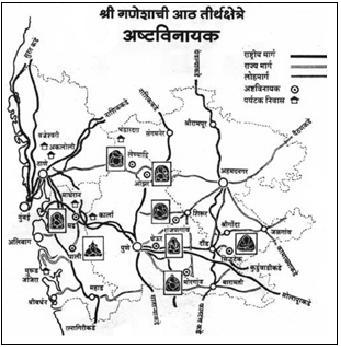
Devotees of Ganesha can make a yatra or pilgrimage to visits the eight ancient holy temples of Ganesha. The pilgrimage usually visit the temples in a prescribed sequence. Traditionally a pilgrim will visit the temples in this order, Moreshwar; Siddhivinayak; Ballaleshwar, Varadavinayak, Chintamani, Girijatmaj, Vighnahar, Mahaganapati and then again to Moreshwar temple.
- The Moreshwar Temple in Moregaon, India
- The Siddhivinayak Temple in Siddhatek, India
- The Ballaleshwar Temple in Pali, India
- The Varadavinayak Temple in Mahad, India
- The Chintamani Temple in Theur, India
- The Girijatmaj Temple in Lenyandri, India
- The Vighnahar Temple in Ozar, India
- The Mahaganapati Temple in Ranjangaon, India
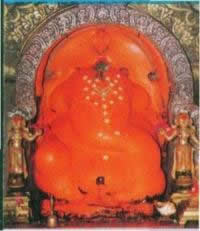
|
The Mayureshwar Temple |
Pilgrims on Ashtavinayak yatra both begin and end their pilgrimage at the Mayureshwar (or Moreshwar) Temple. It was here that Lord Ganesha, in the form of Mayureshwara appeared, riding a peacock, to defeat the demon Sindhu. |
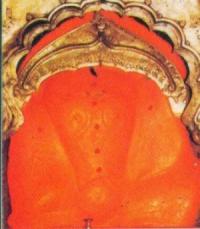
|
The Siddhivinayak Temple |
It was here that Lord Vishnu prayed to Ganesha before defeating the demons Madhu and Kaitabh. This form of Ganesh is named Siddhivinayak, because it is believed that Lord Vishnu achieved success after he prayed here. |
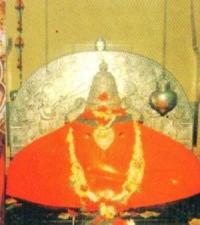
|
The Ballaleshwar Temple |
It is here that a young boy named Ballala showed great devotion to Ganesha. Ganesha appeared to him and granted him a boon. Ballala asked Ganesha to “stay at this place and remove the miseries of the people, who come to you.” As Ballala requested, a part of Ganesha remains in this place. |

|
The Varadavinayak Temple |
Varadvinayak Temple or Mahadcha Shri Varadavinayak Temple. Ganesha is said to reside here in the form of Varada Vinayaka, the giver of bounty and success. The idol was found in the adjoining lake (to Mr. Dhondu Paudkar in 1690AD), in an immersed position and hence its weathered look. Lord Ganesha is believed to have given darshan to Gruthsmadh, who performed penance to get rid of sins. He was granted what he wished and therefore the Varad Vinayak here is known as one who fulfills wishes. |

|
The Chintamani Temple |
Ganesha is believed to have retrieved the precious Chinatamani jewel from a greedy Guna, for sage Kapila at this spot. After the jewel was returned to the sage Kapila gave the beautiful jewel to Vinayaka (Ganesha). |
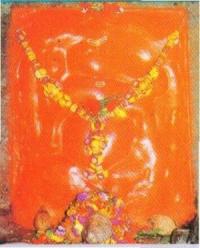
|
The Girijatmaj Temple |
It is believed that the Goddess Parvati stayed at this place and performed penance before the birth of her son, Ganesha. The name Girijatmaj comes from the words Girija's (Parvati's) and Atmaj (son). |

|
The Vighneshwa Temple |
The King of Gods, Indra, created a demon called Vighnasur, to destroy the unworthy prayers of King Abhinandan. However, the demon continued his destruction and began to destroy all the people's prayers. The gods called on Ganesh, who quickly defeated him. However, the demon begged and pleaded with Ganesha to show mercy. Ganesha granted him his life, but on the condition that the demon should not go to any place where Ganesha worshipping is going on. The demon’s name, Vighnasur, comes from the Sanskrit word “Vighna” meaning “a sudden interruption of work due to some unforeseen event.” |

|
The Mahaganapati Temple |
Shiva is believed to have worshipped Ganesha at this place, before fighting the demon Tripurasura. This form of Ganesha is known as Tripurarivade Mahaganpati. Mahaganapati means ‘the Great’ Ganapati. A Mahaganapati murti has eight, ten or twelve hands. The Mahaganpati at Ashtavinayak is considered the most powerful representation of Lord Ganesha. |
Visit these sites to learn more about Ganesha's Symbols:
|
||
|
Return to Ganesha's Temples |
||


